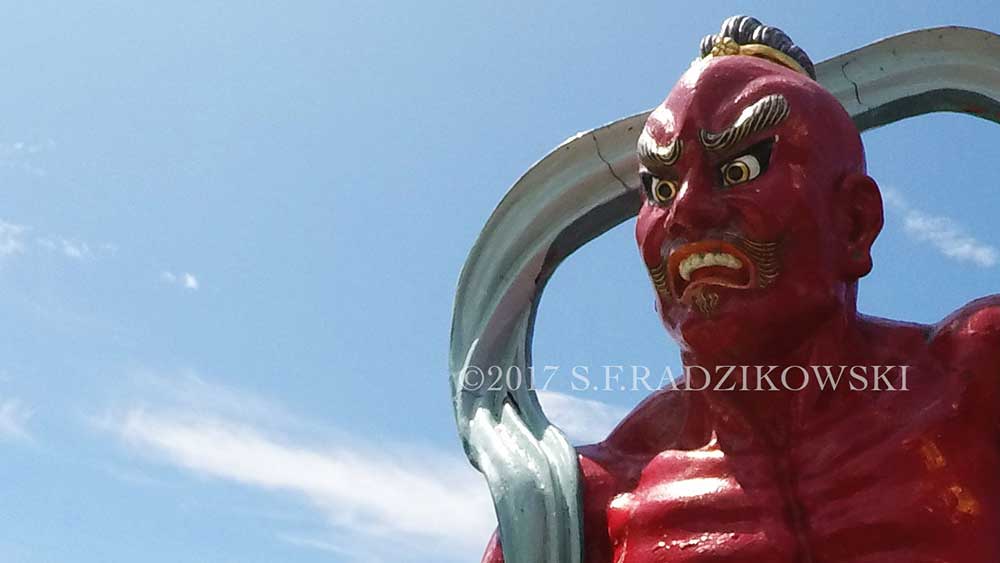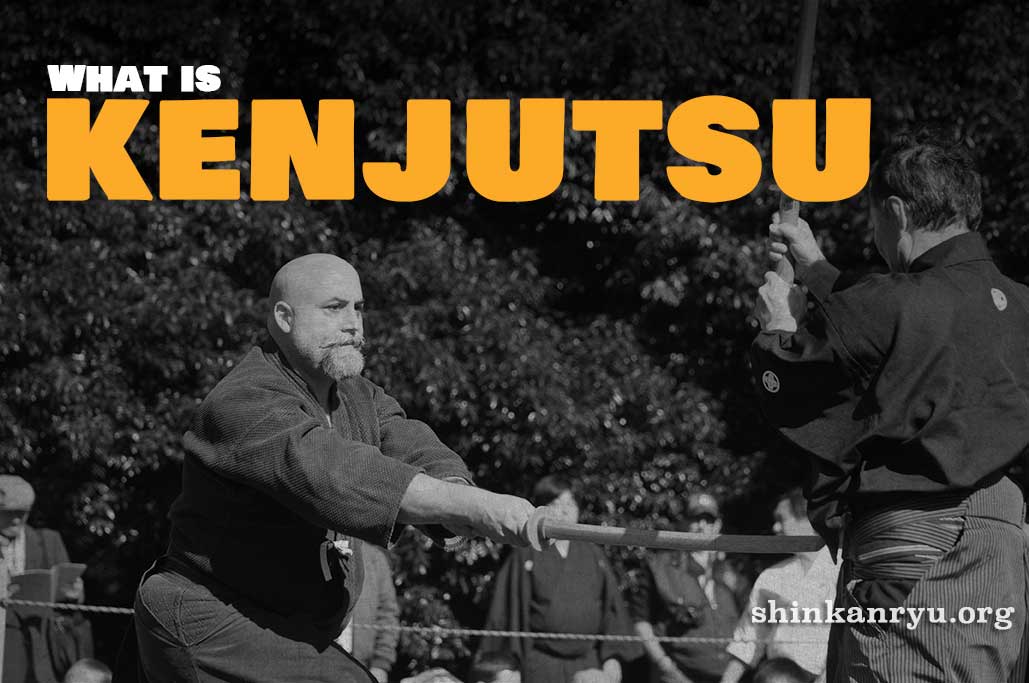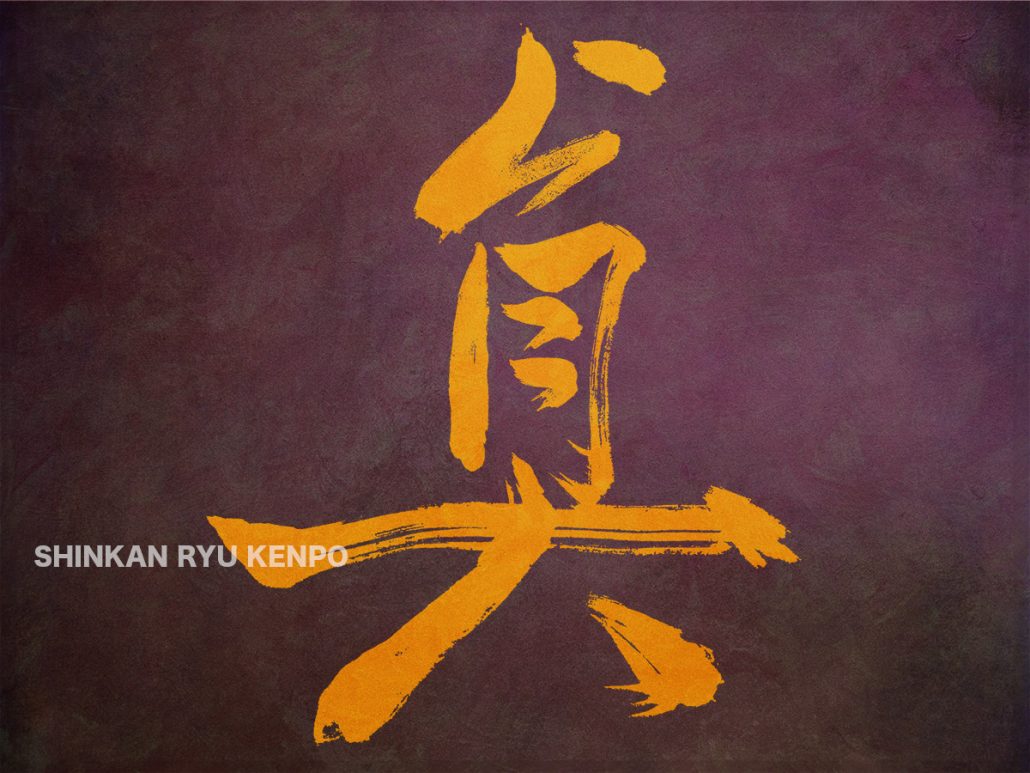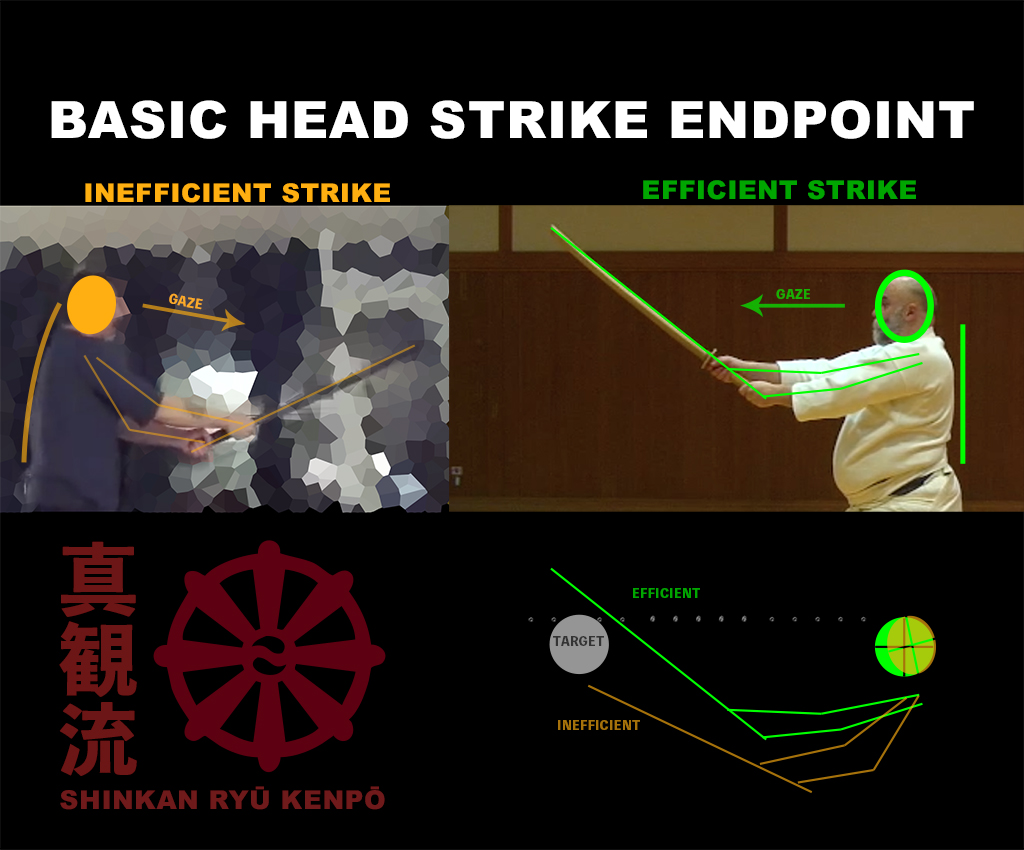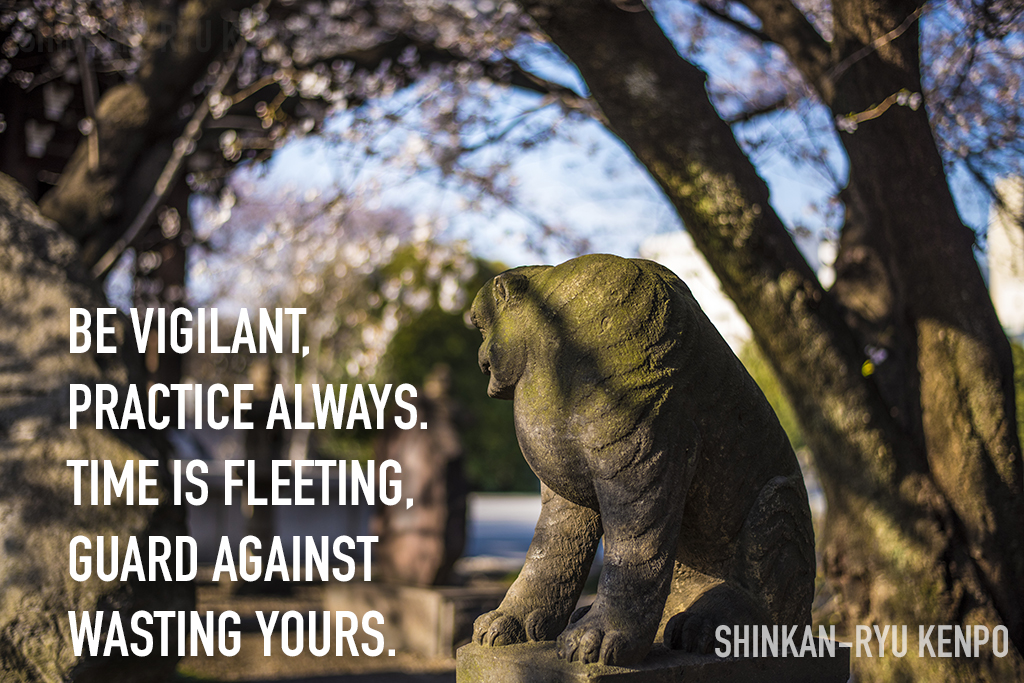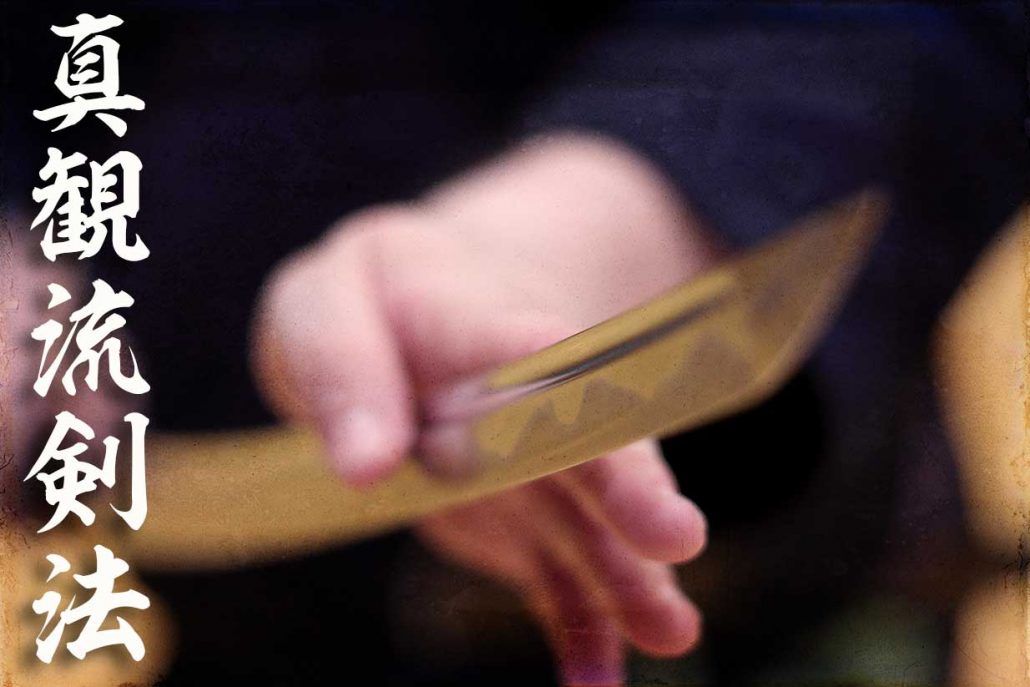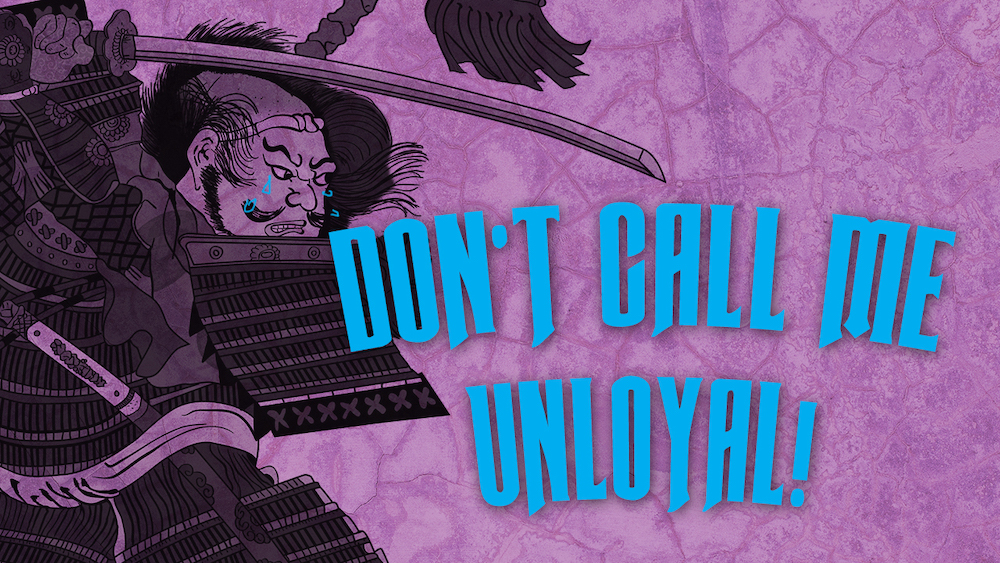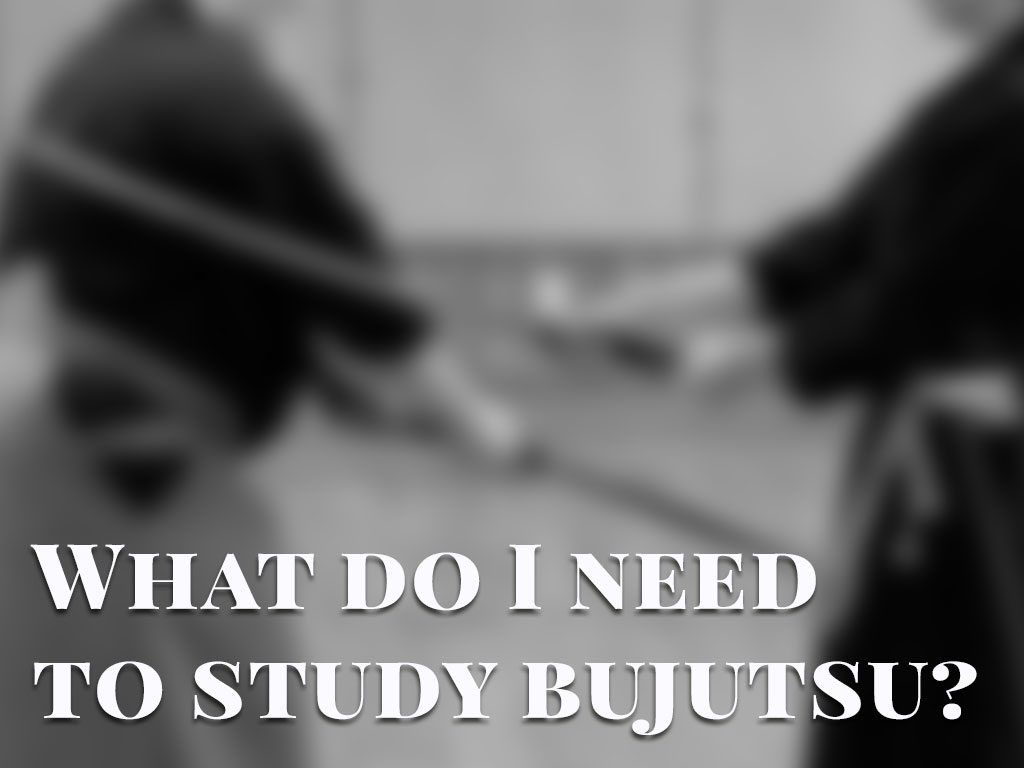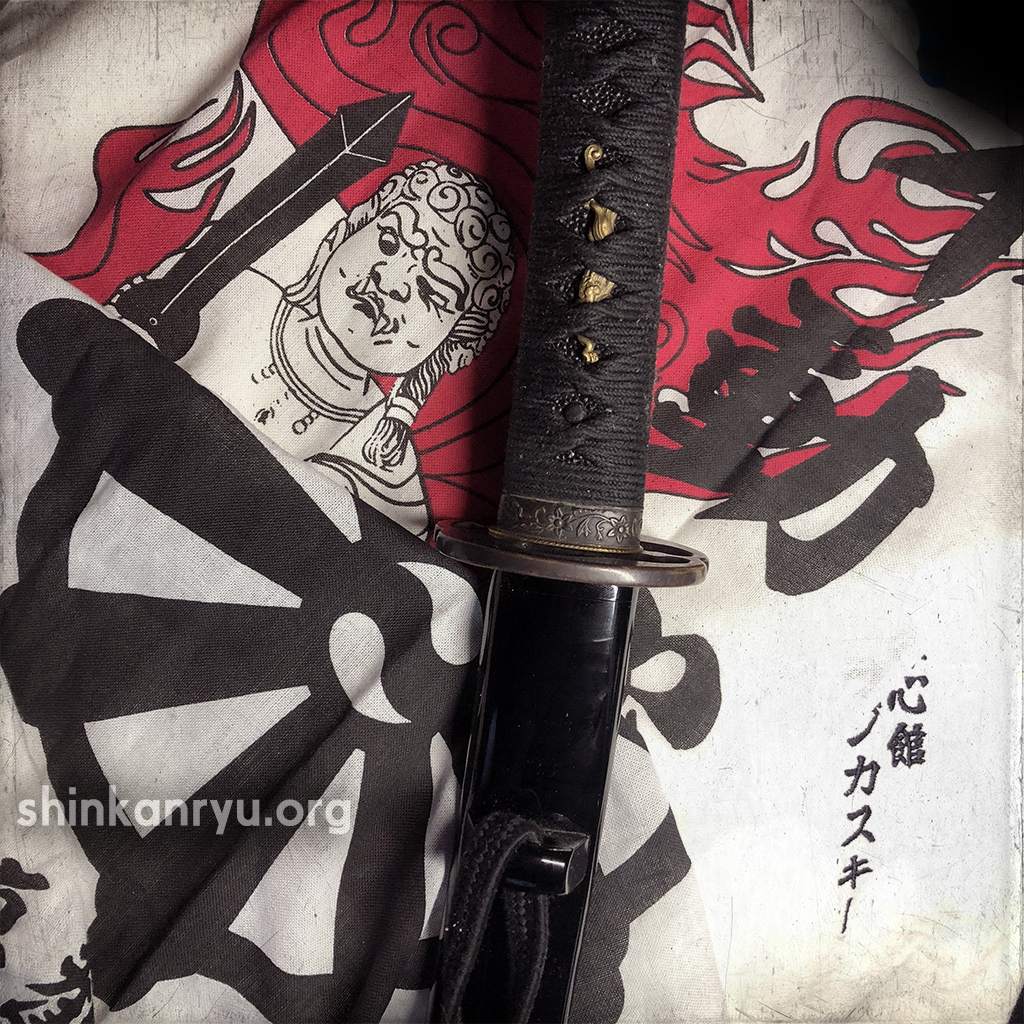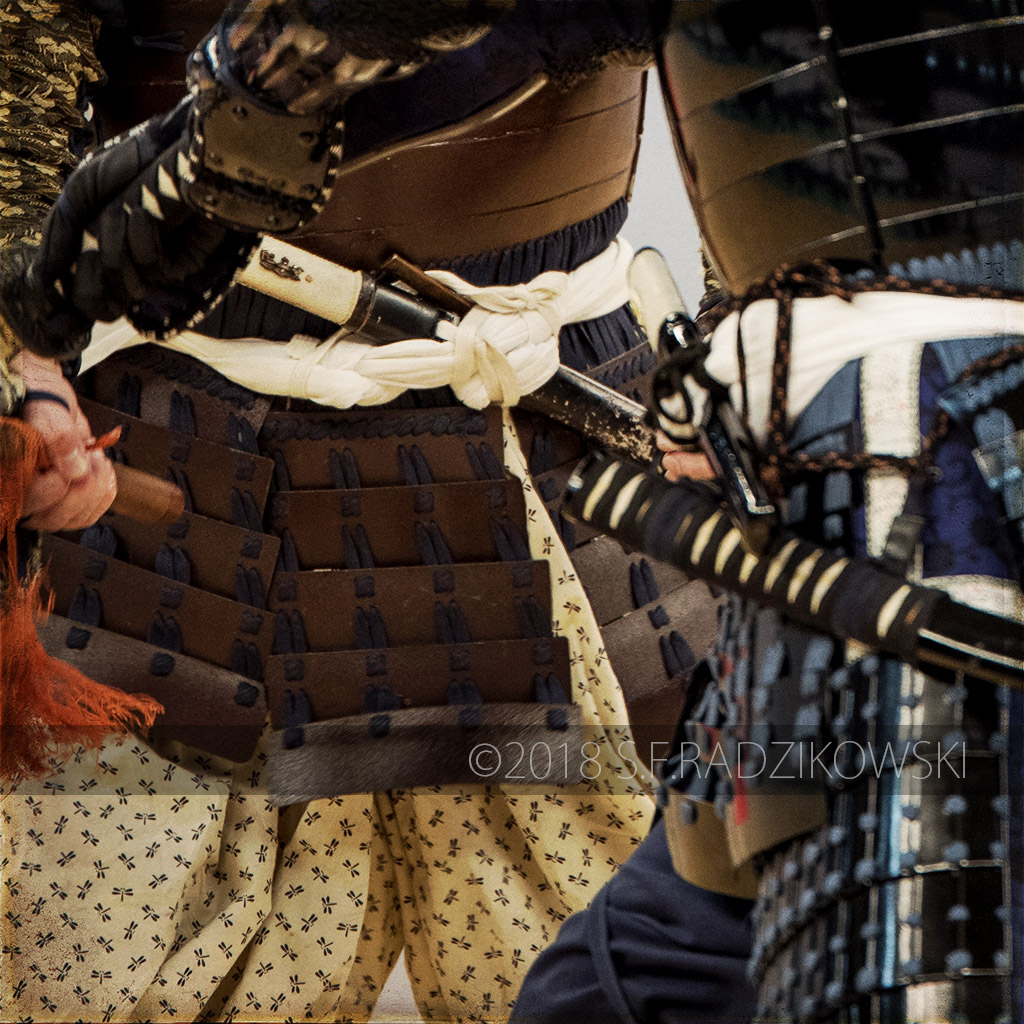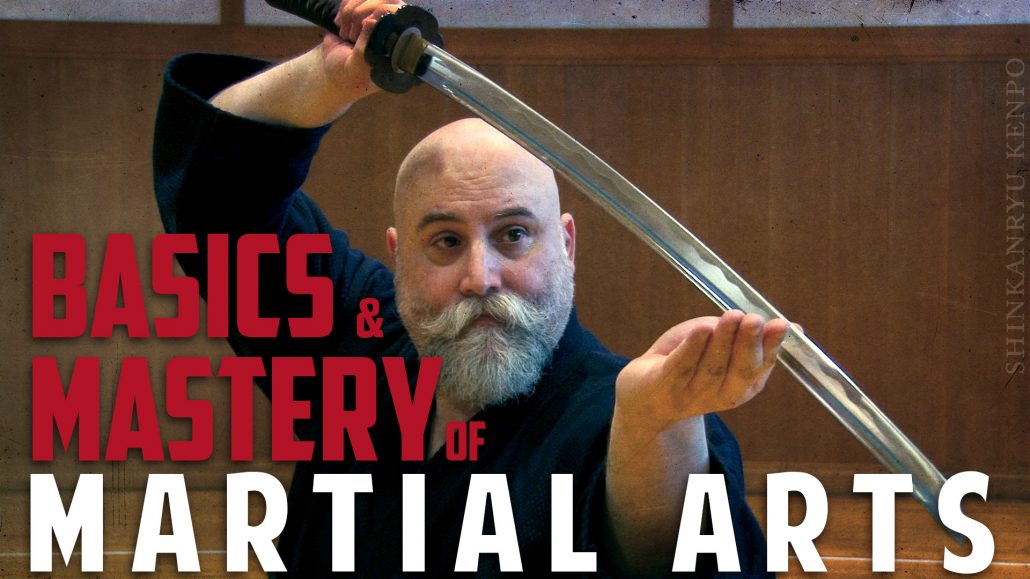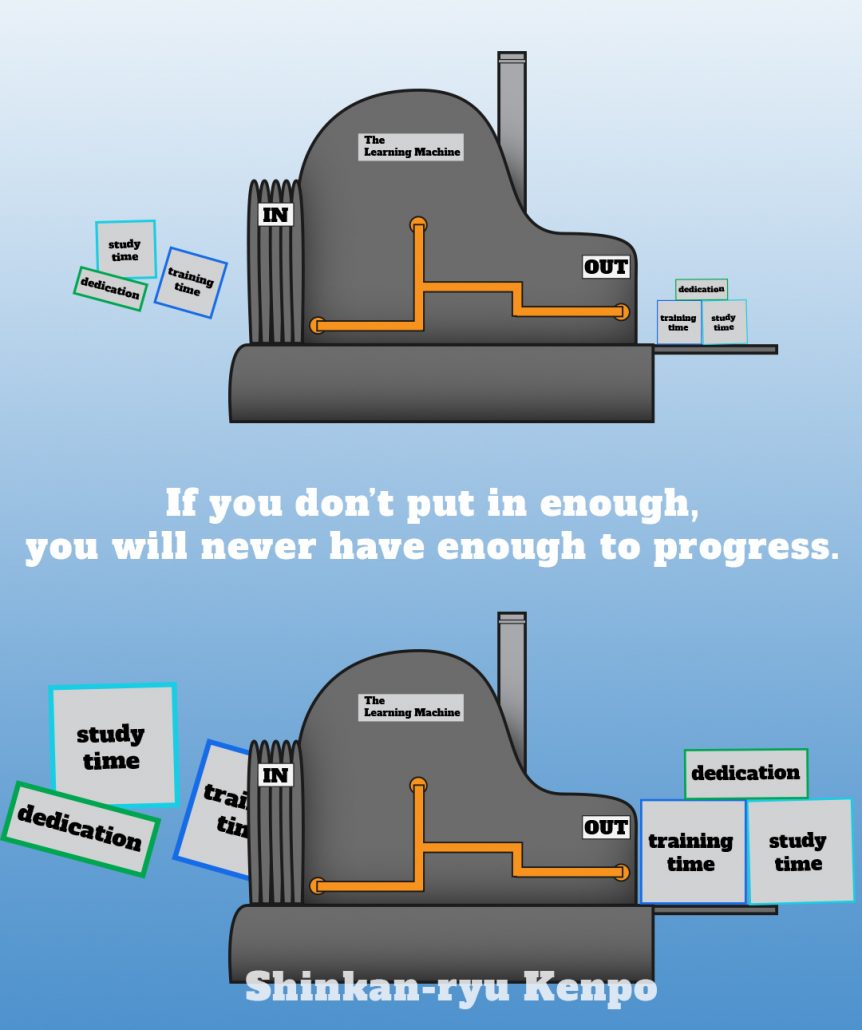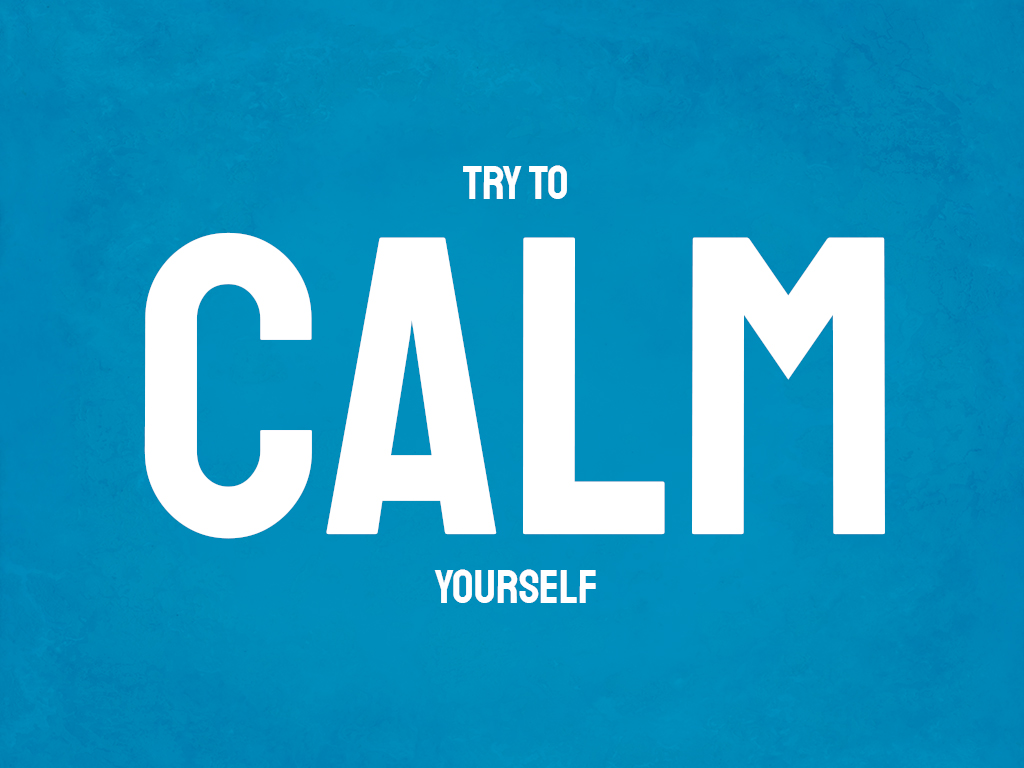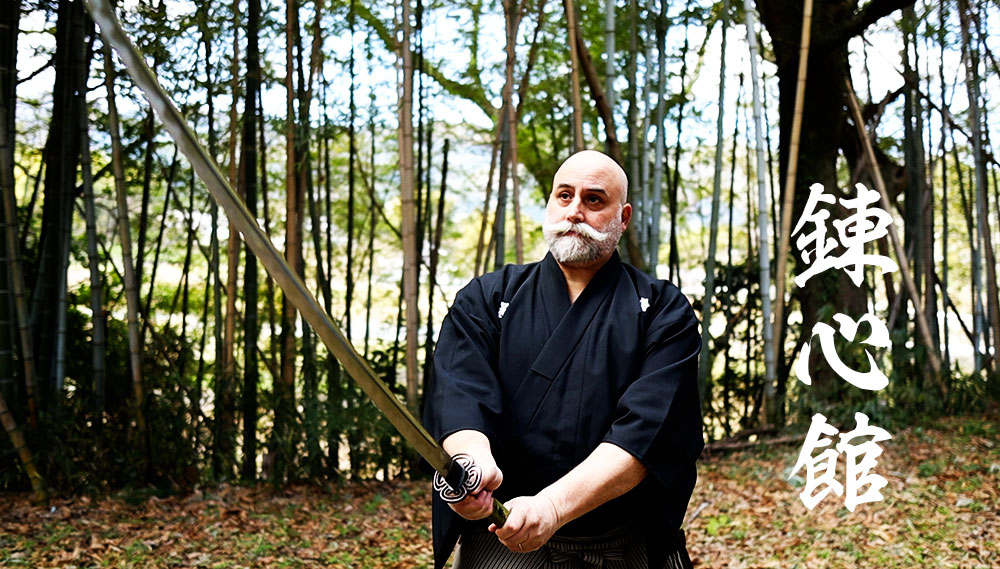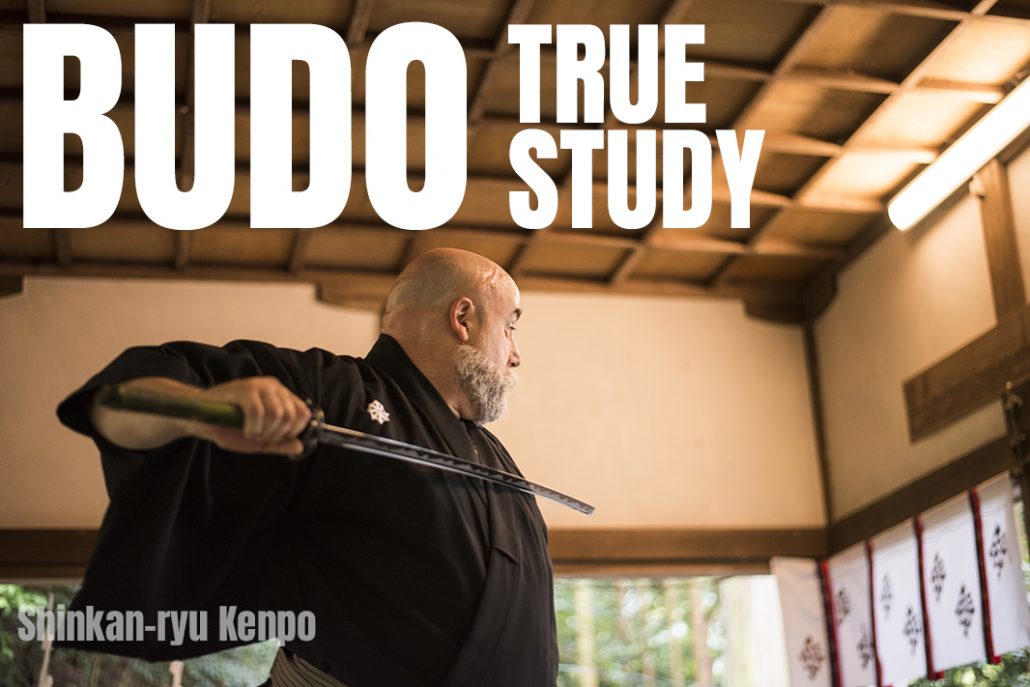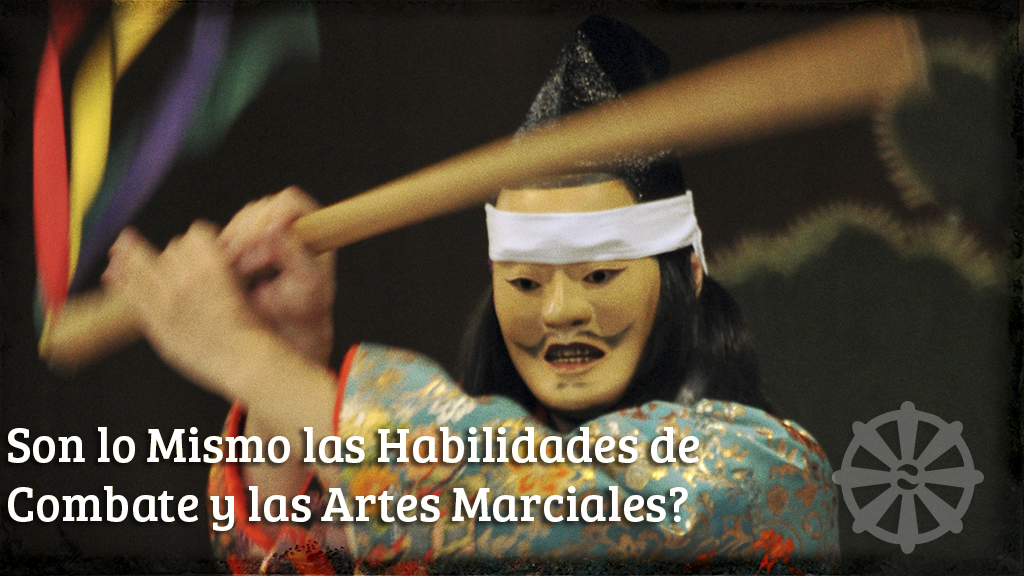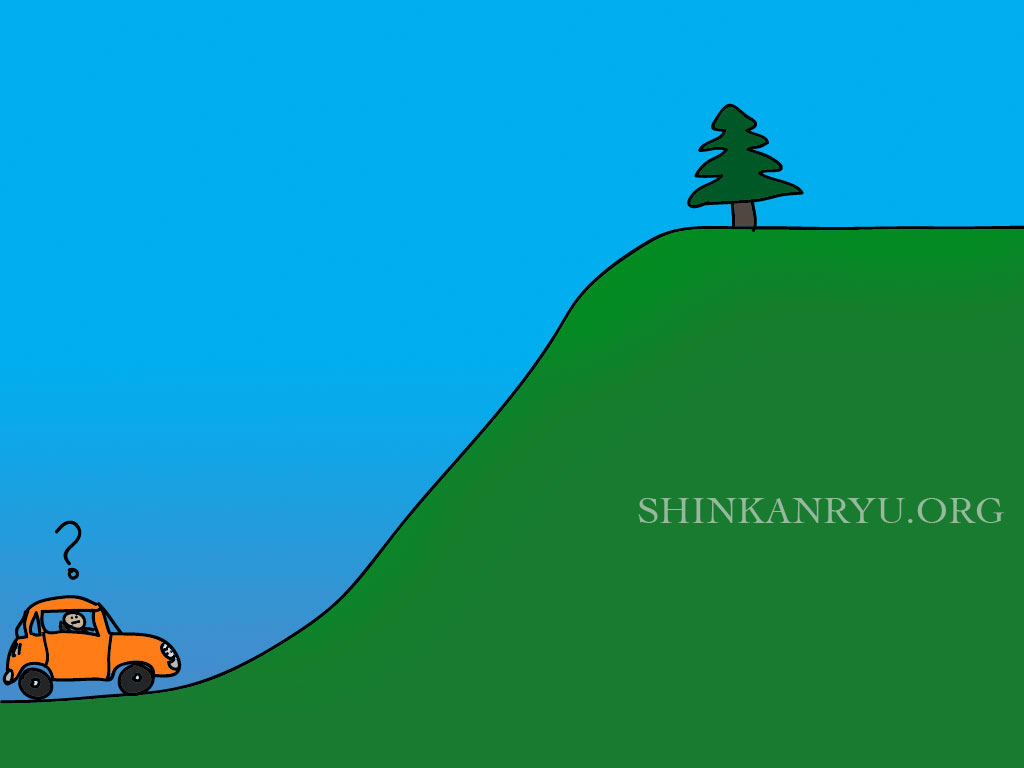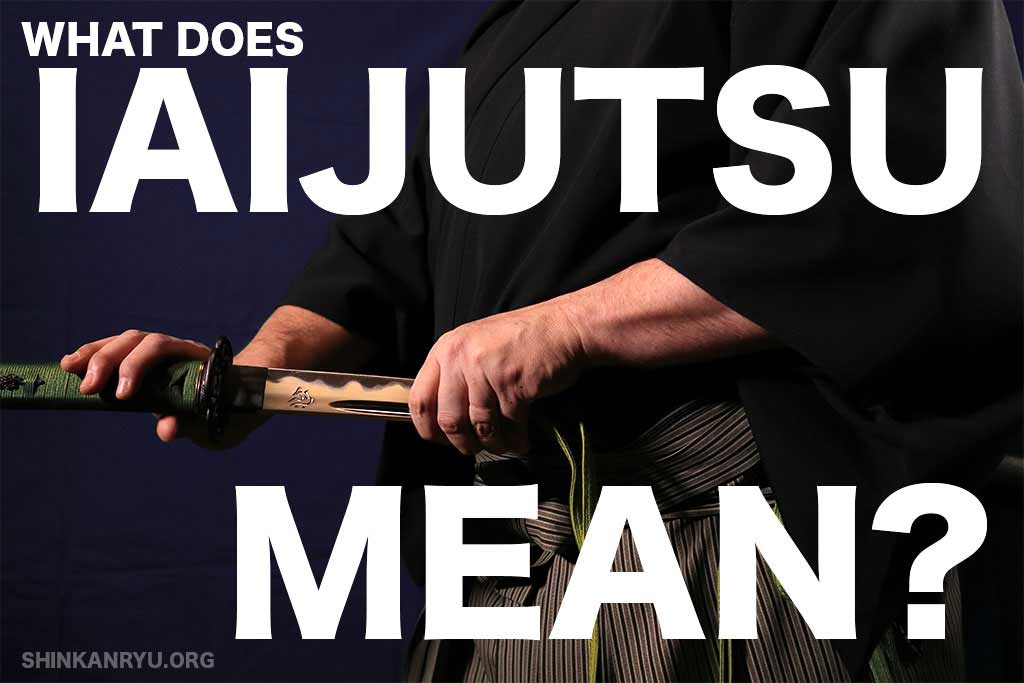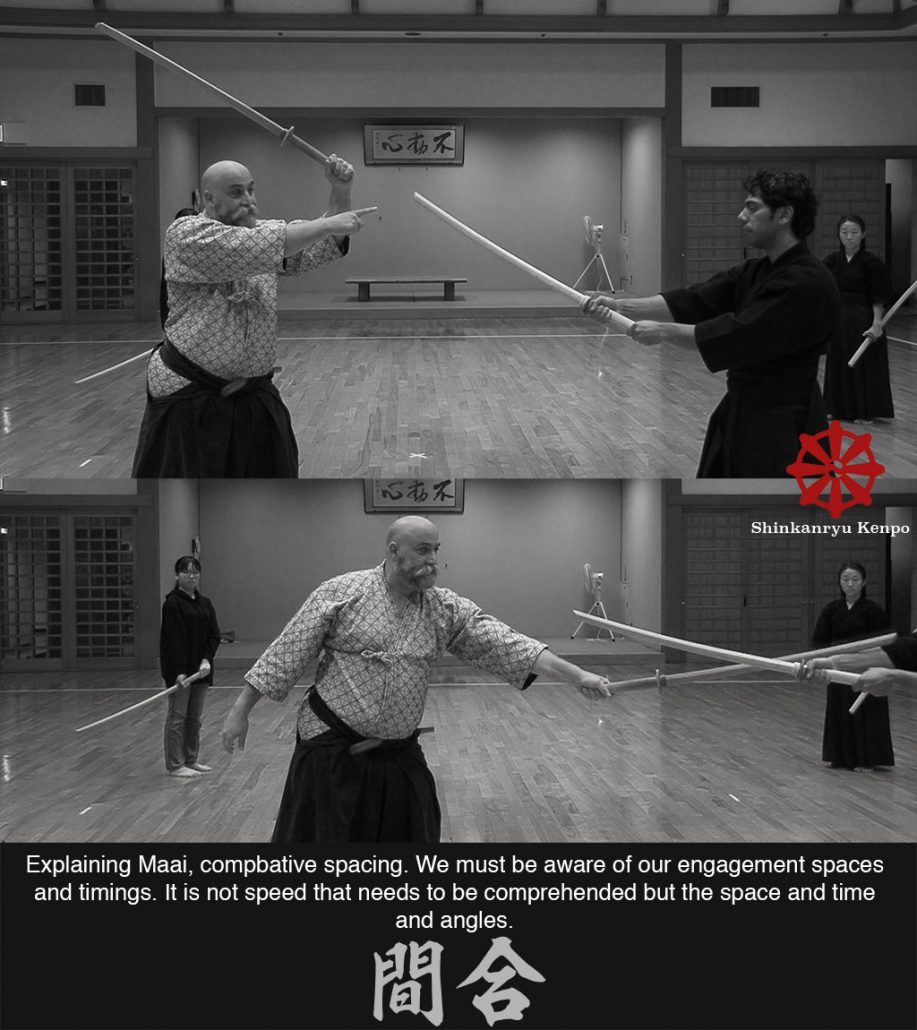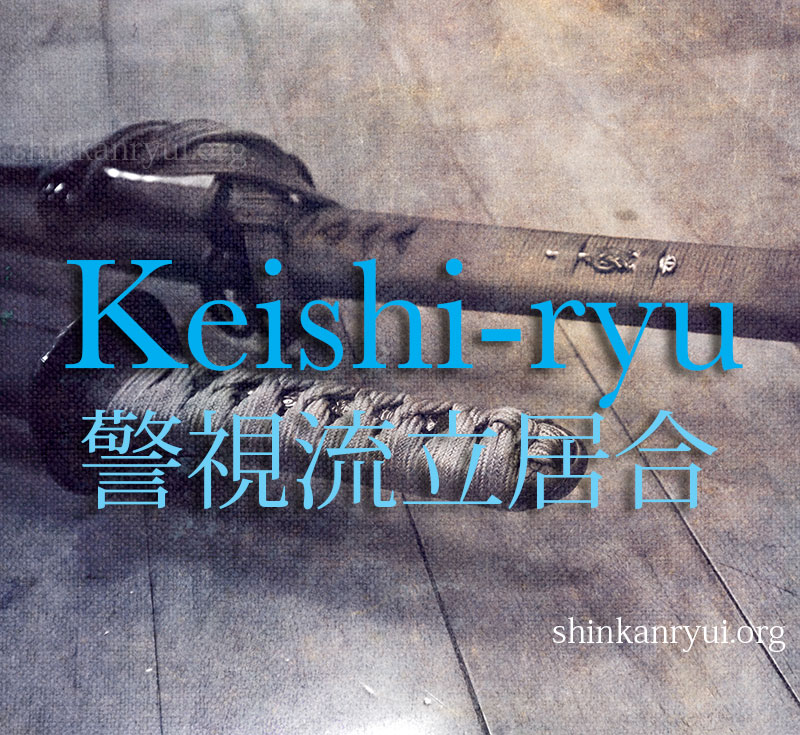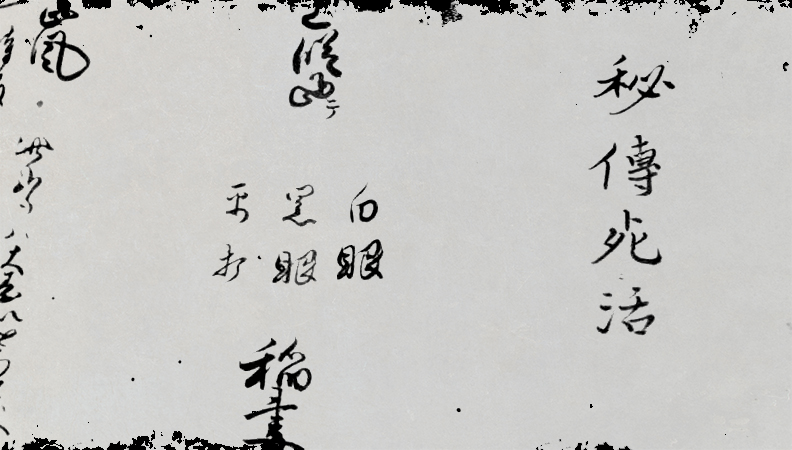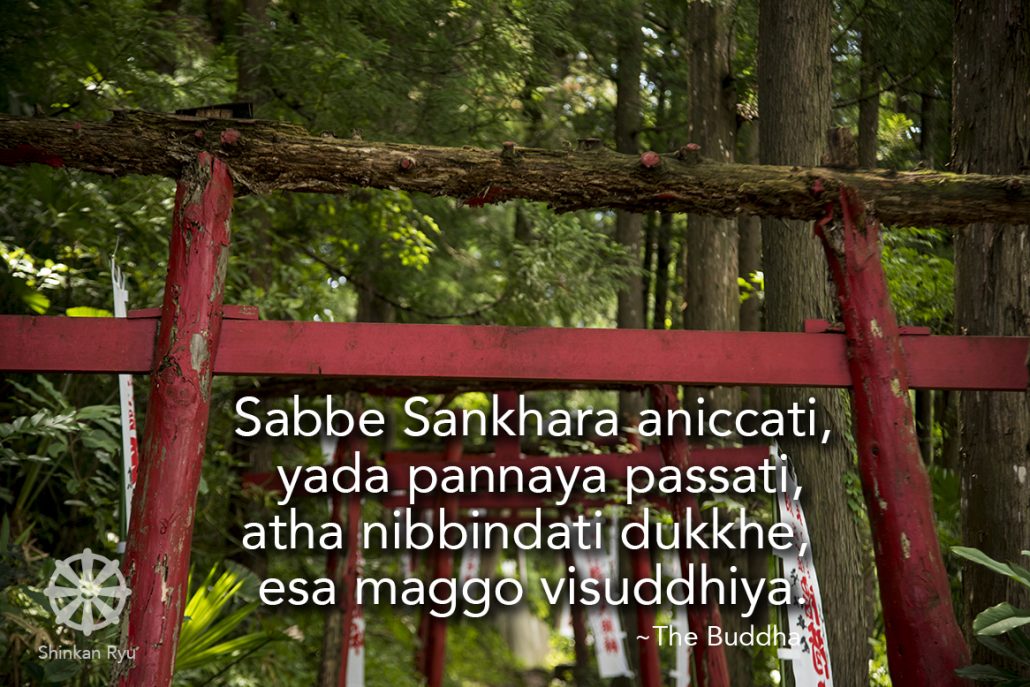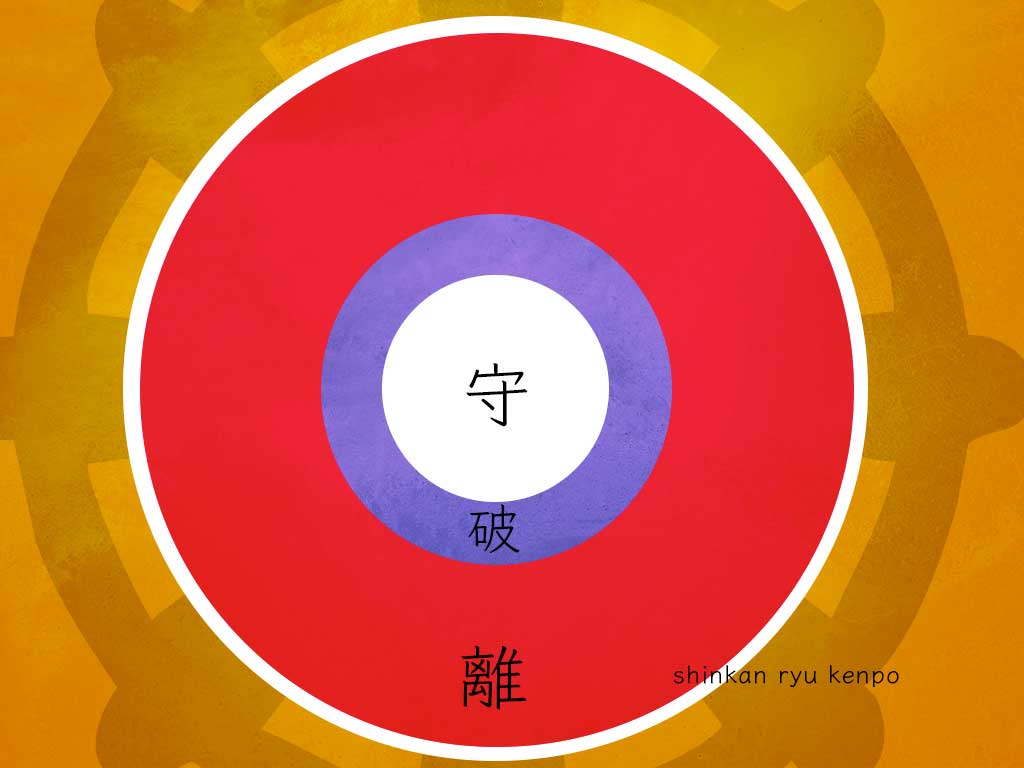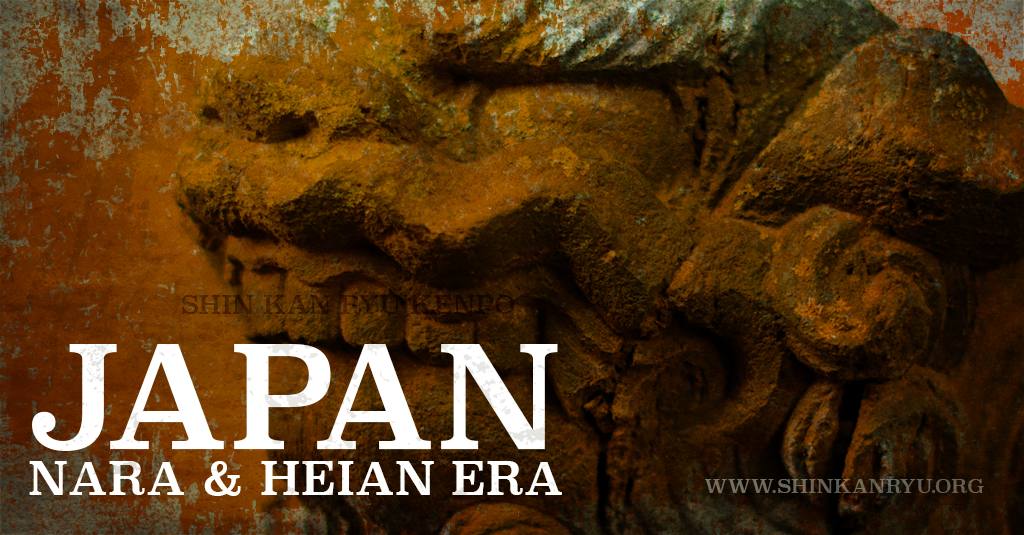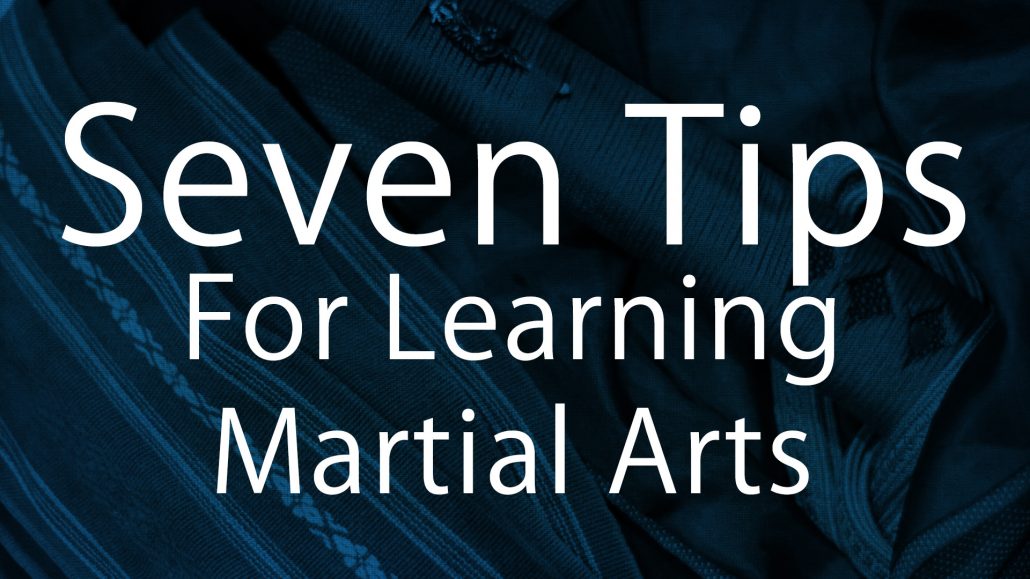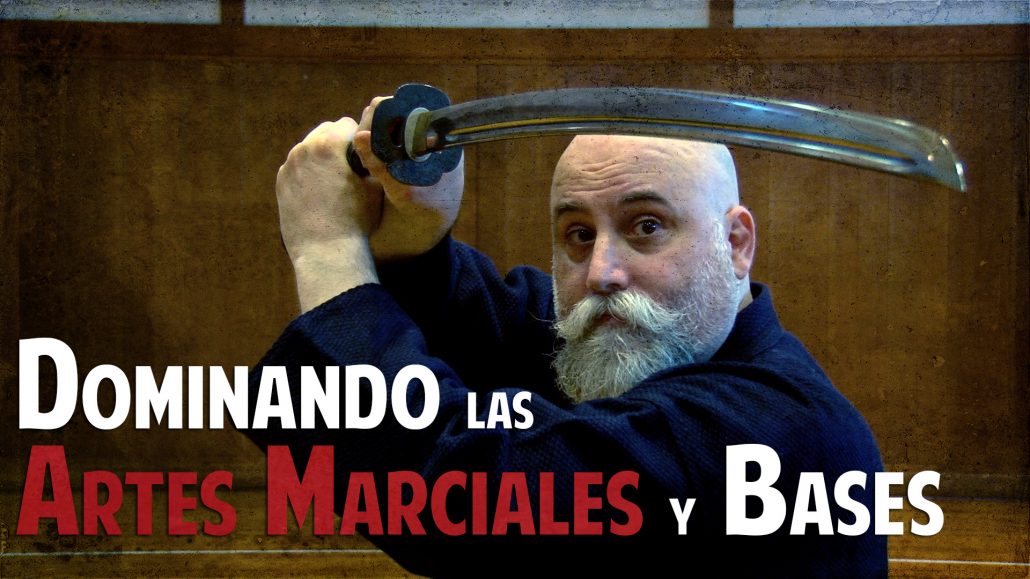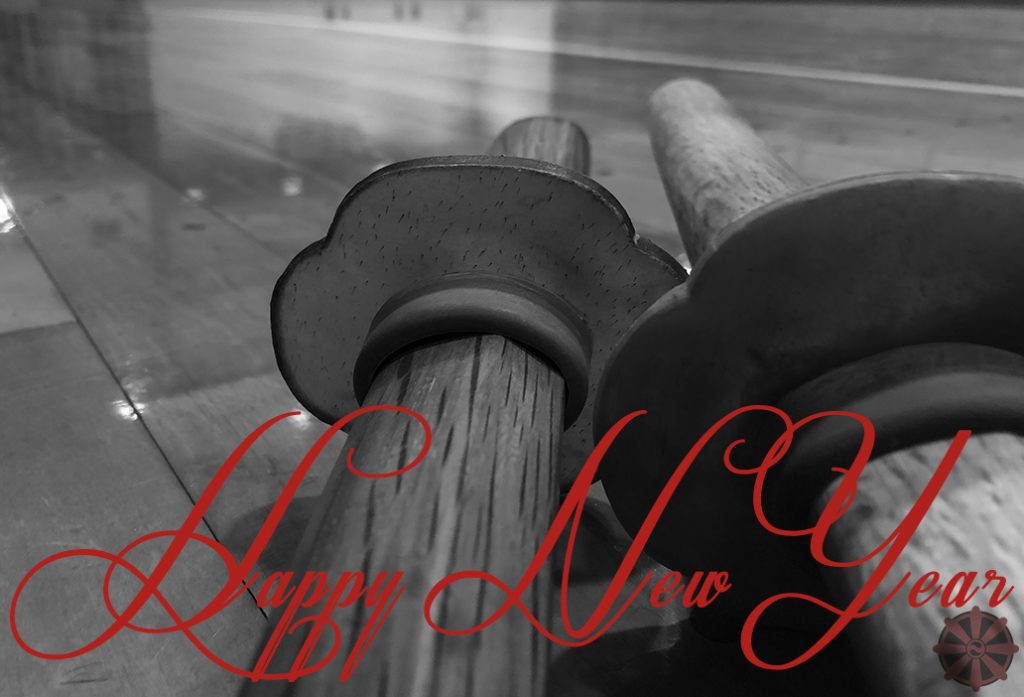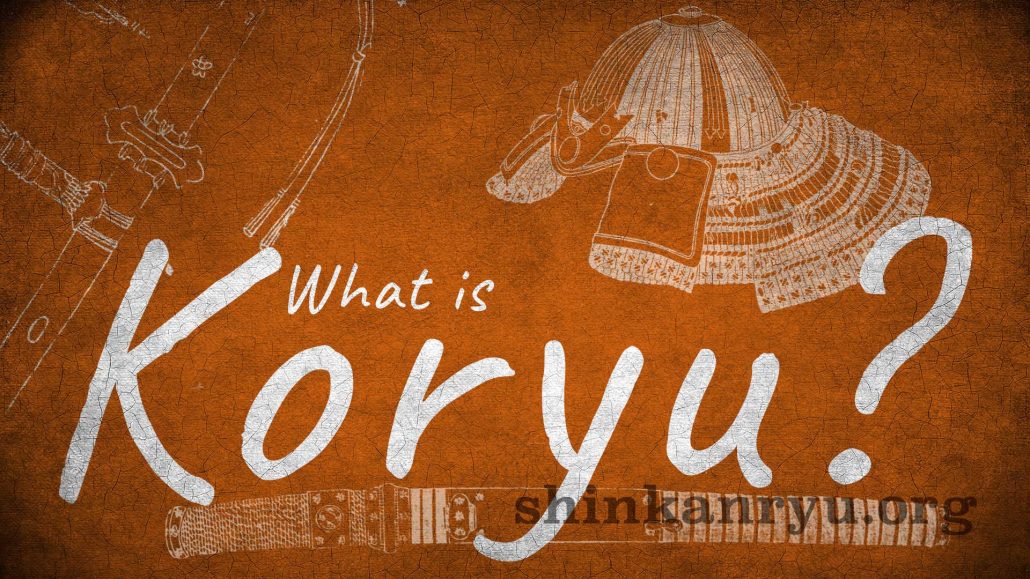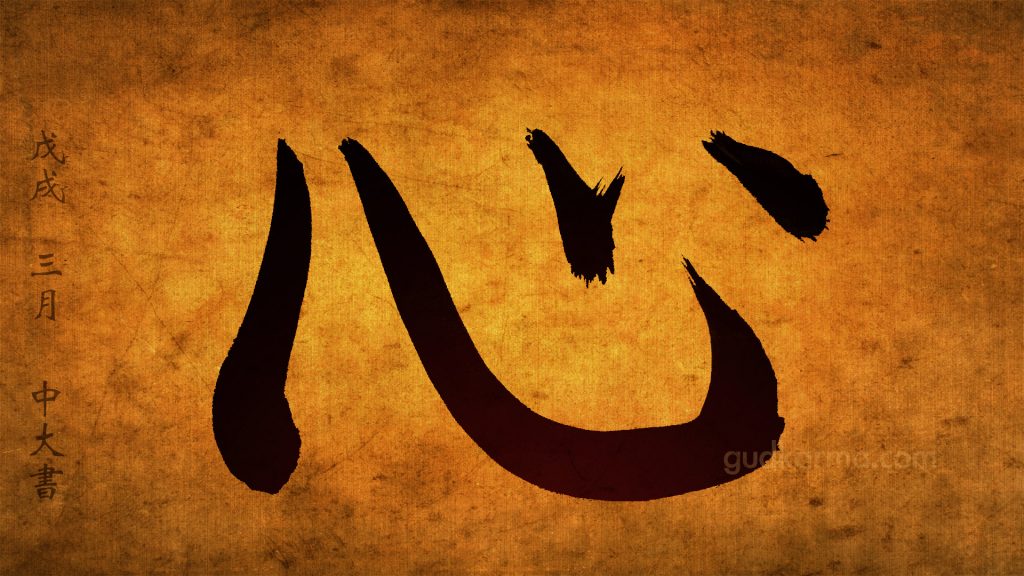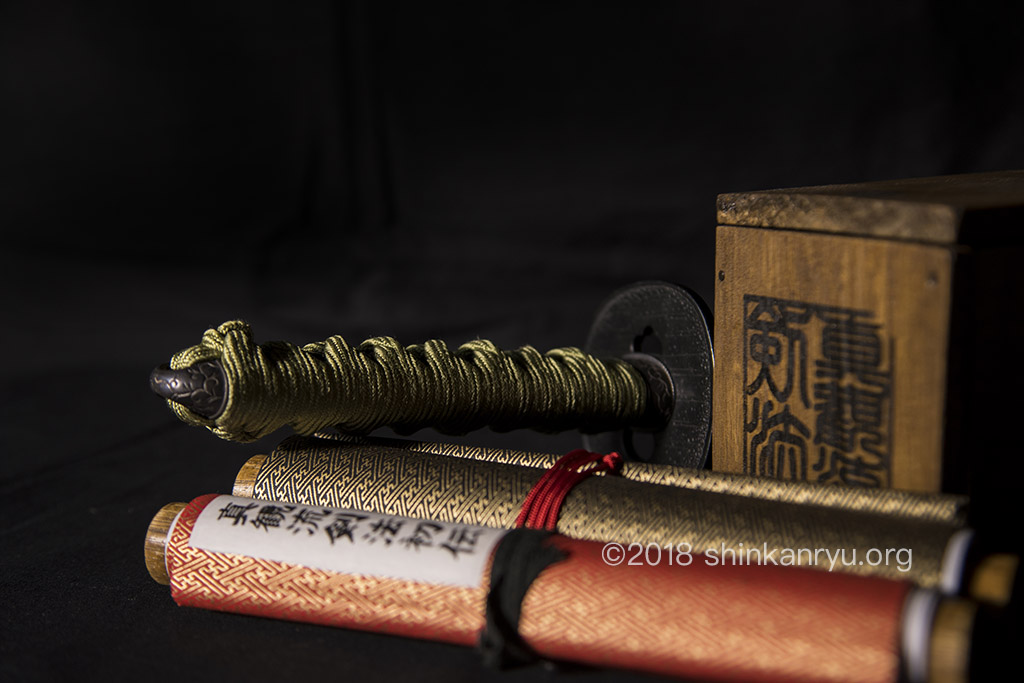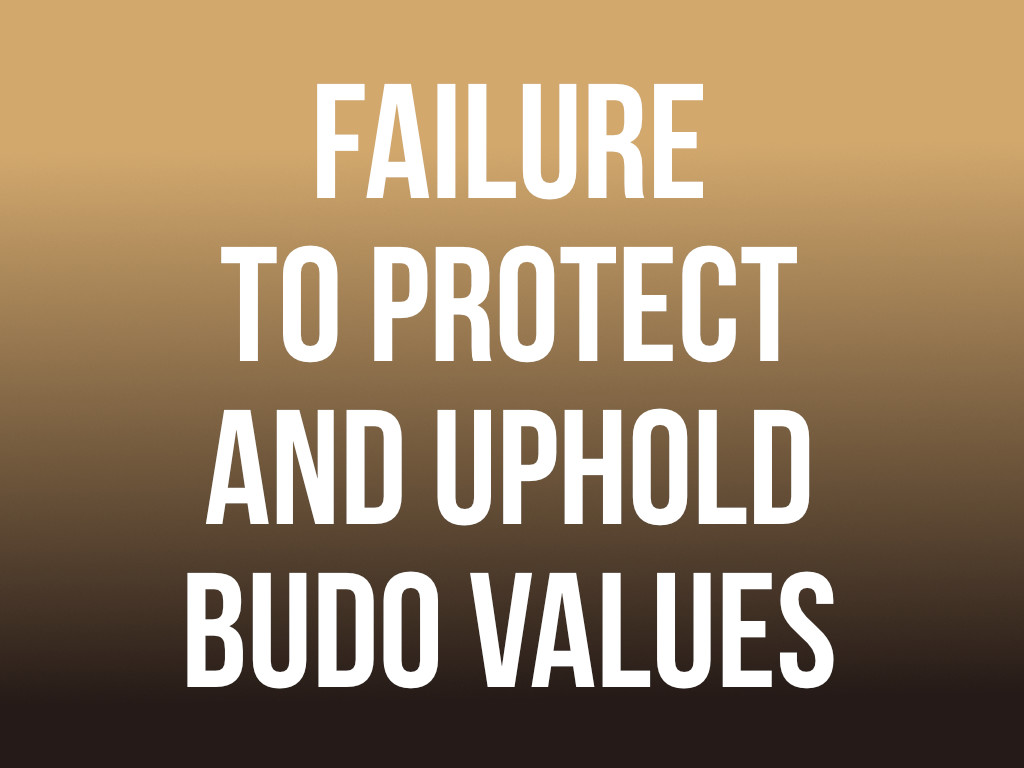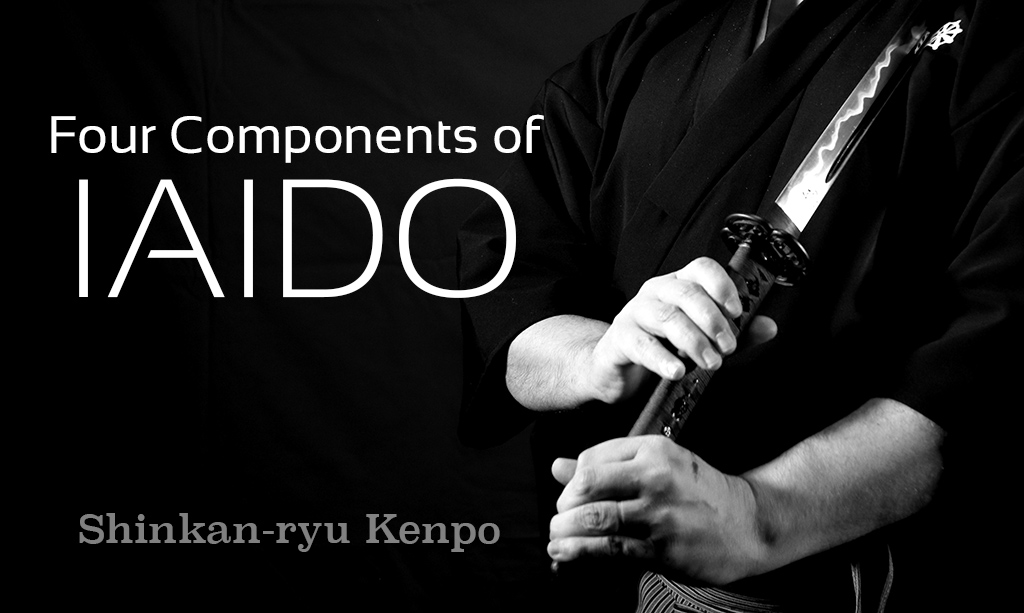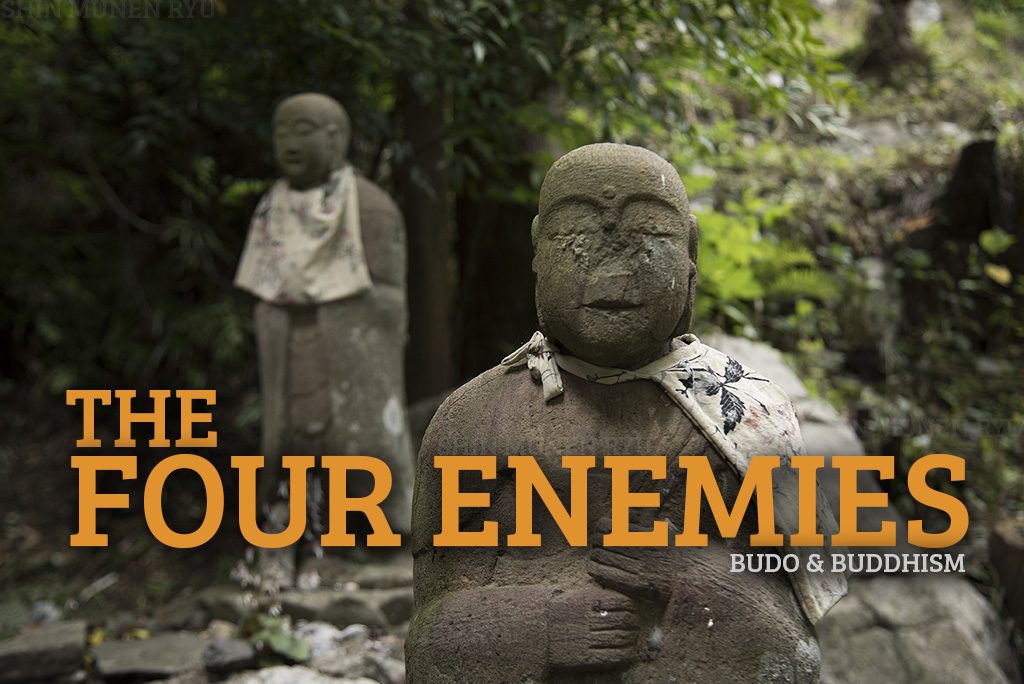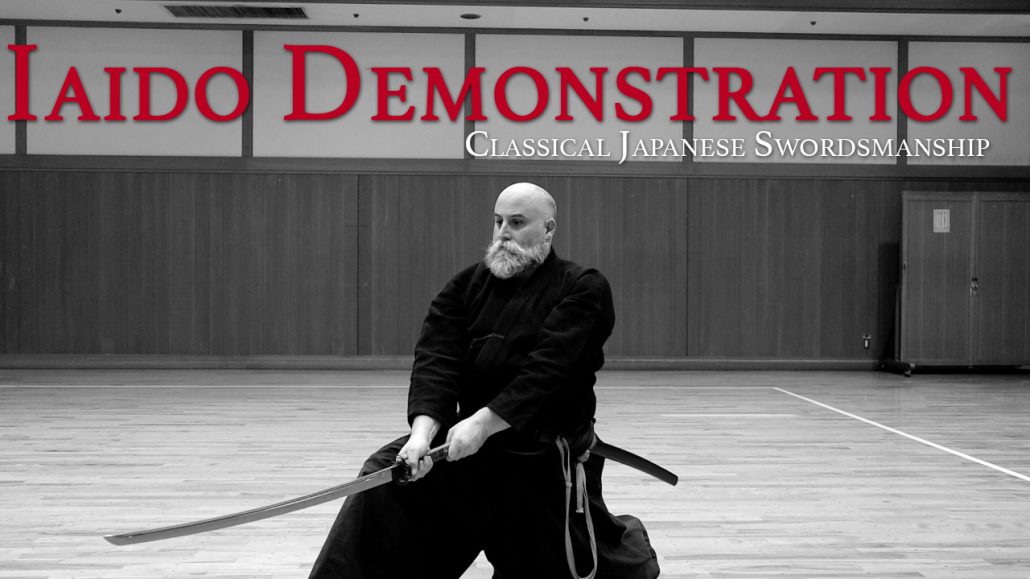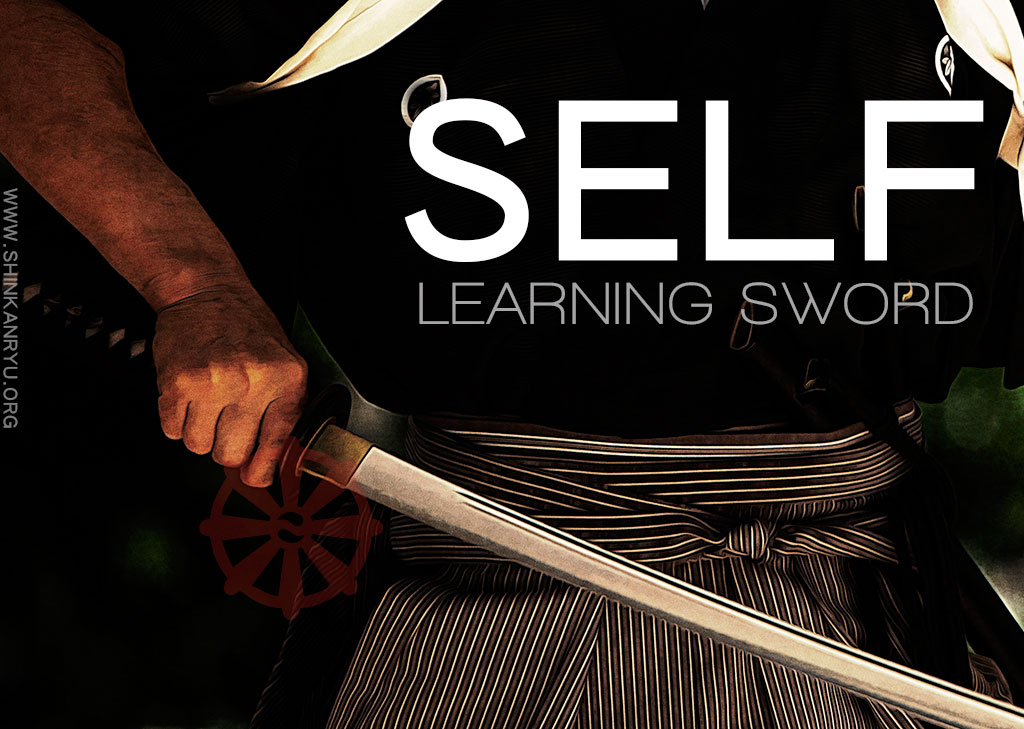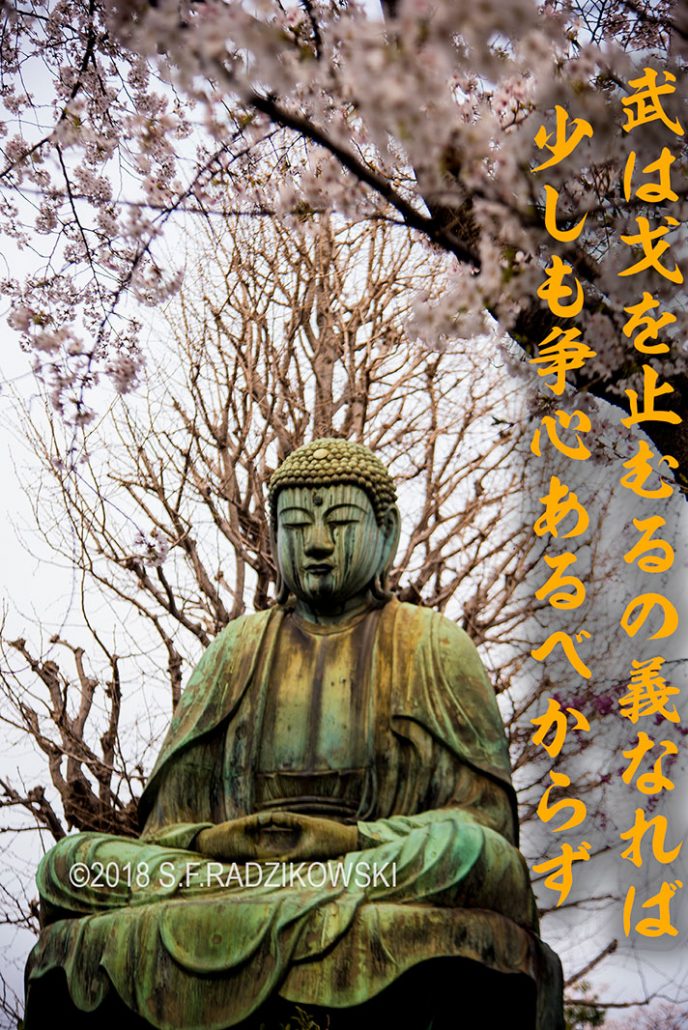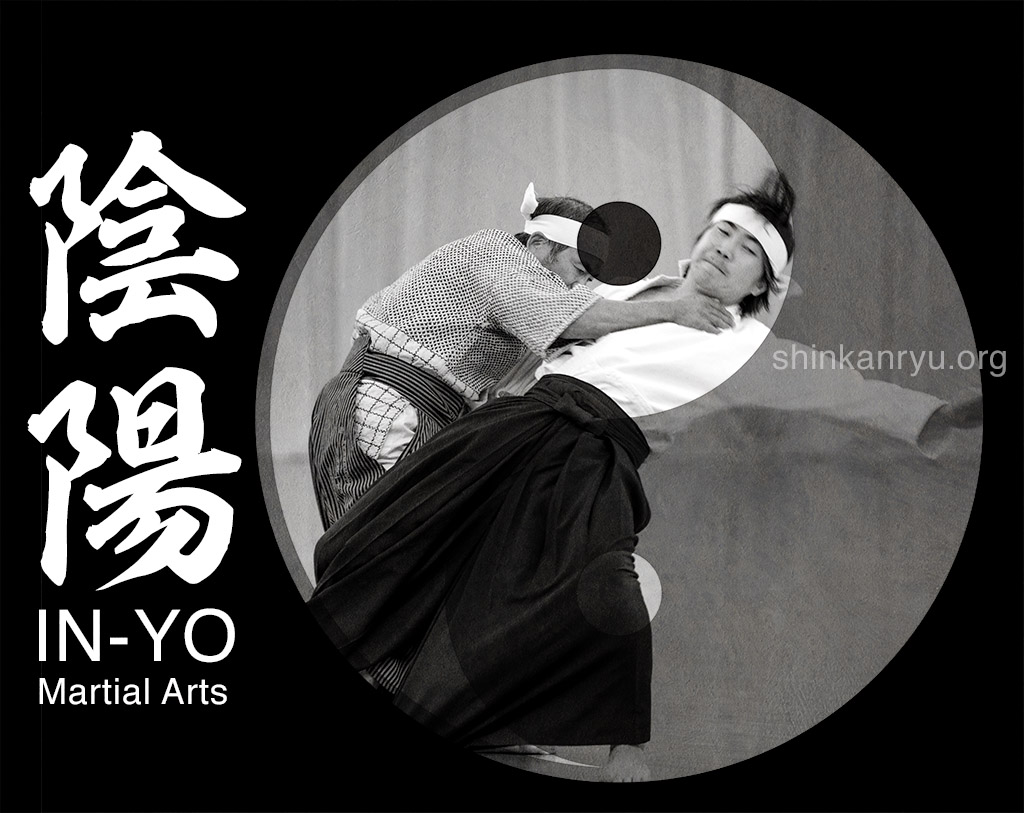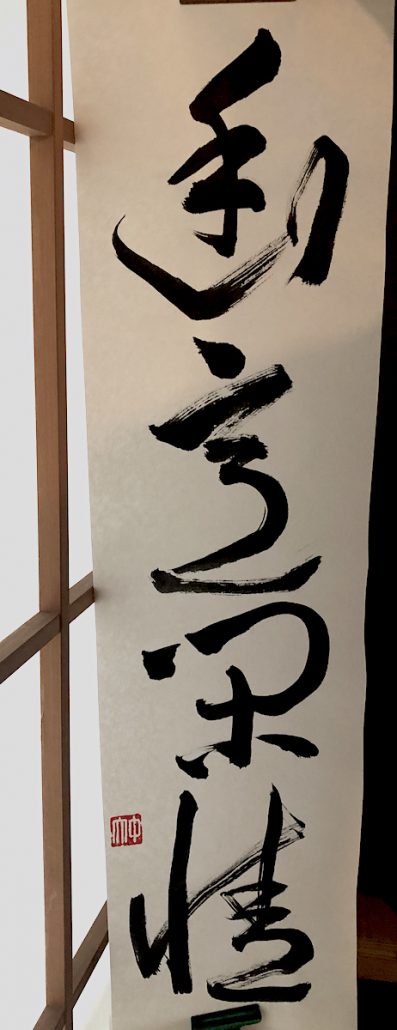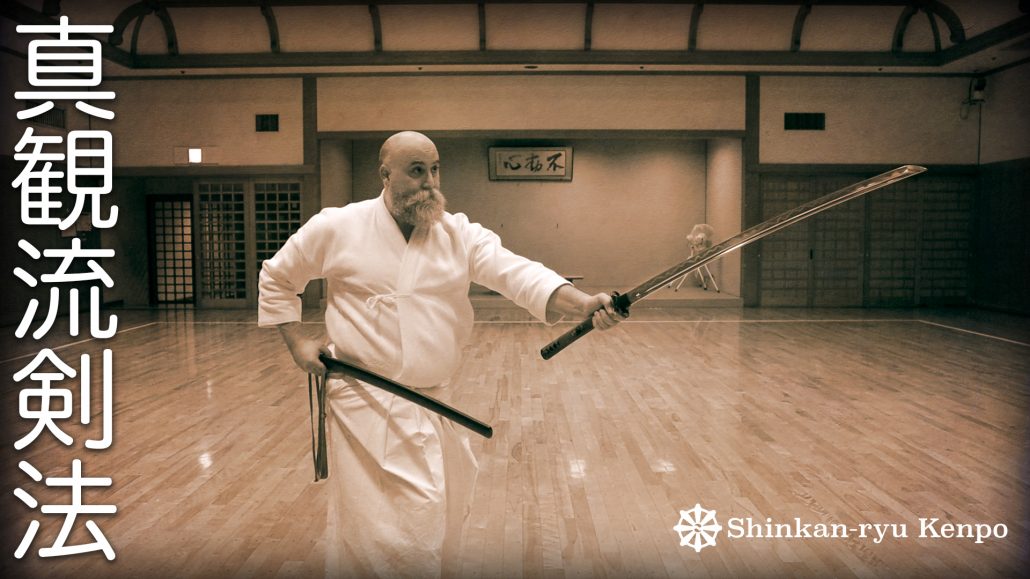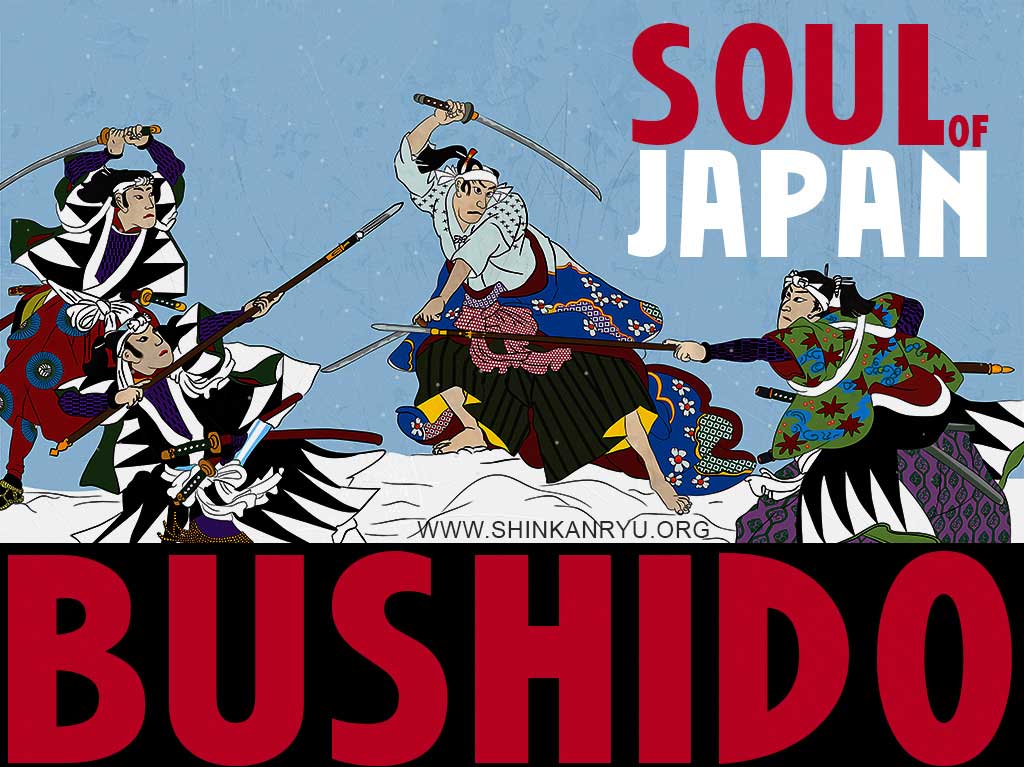The koryū of Japan are not self-defense arts. Although they can be authentic and certainly do deal with the realistic push or pull of an unwilling opponent, they are not designed for modern-day self-defense. They were not wholly designed for self-defense back in the day either. Partly, but not completely, and certainly lots of arts sprang up through the Edo period (1603-1868) which created techniques that could never truly be pressure teasted as it were.
You can name your art kobushi blah blah blah to make it sound authentic and Japanese but it is not a traditional Japanese bugei. When you blend things together you get a muddy solution. It is akin to mixing paints, as I have said before. If you do not really know what you are doing then it becomes a murky mess.
What is different?
Combative arts are martial arts. They are not self-defense. Combative skills and combative arts do not share the same goal. I do not wish to be pedantic. I do wish to illustrate there are different goals. One goal is to be proficient as a military member or law enforcement professional. Where every day you might come into contact with situations that require you to defend your own life, or that of someone else. Situations that might require you to disarm someone carrying an edged weapon or firearm. It might require you to subdue and control someone who has a muscular or mass advantage over you. Your life is actually in jeopardy, and you need certain skills to handle those situations. That is why you would study combat skills.
Combat skills are designed to be used under duress and extremely unbalanced attacks, e.g. someone twice your size, highly skilled, or armed against unarmed, etc. A martial arts background might be helpful but judo, aikido, karate study, in general, will not prepare you for the situations mentioned above. Sorry to burst your bubble, but general aikido is not going to teach you to do real-world knife disarms. Nor will Taekwondo allow you to thwart someone robbing you at gun point. Iaijutsu is not going to help you either. Those arts are great but as with all martial arts, they have their limitations. Unfortunately, a lot of nonsense pervades many a dojo around the world and sensei want to market their humble arts as something, well, not so humble.
The shortcomings of classical martial arts is not a bad thing. They are simply not designed to train you properly for a situation where your life is actually in danger. Studying kobujutsu or koryū is an exercise in the preservation of a legacy or cultural lineage. A way of life and antiquated fighting or combat. That does not mean it's not relevant or doesn't go through changes. I am of course biased as that's what I do. I certainly do not teach that my no-sword techniques will prepare anyone for dealing with a knife or even real-world sword fight. I am under no illusion that the sword work I do is of real-world direct application and use. I do not need it to be, nor is it meant to be. I am just fine with that.
Studying classical arts can be serious and the training can be intense but it's not going to wholly equip you to deal with a very dangerous situation as well as some highly realistic self-defense training or combat skill classes will.
We should be not be studying classical swordsmanship or even jujutsu to help us with self-defense. Not directly at least. Studying a good martial art will give you some skills but they are diluted compared to true self-defense or combat skill training needed in a real-world situation.
More is more and more is better!
What happens is that people get involved in some martial arts and pull this or that technique together, call it something like kobushi-ryu, hebi-ryu, or some other non-sense word and teach it as self-defense. Often the instructor of such a school uses his military or law enforcement training and peppers it throughout the classical Japanese, Chinese or Korean arts. Taking techniques from older arts and modifying them for use in the modern world is ok especially if they are thoroughly tested to work in modern settings. The issue is some people think more is better.
People start hopping from person to person thinking that learning and teaching nineteen different arts makes them understand martial arts better. Different martial arts from different countries. That's a lot of differences to keep straight. How can anyone really know any of those nineteen deeply? Maybe it's not his pursuit. As I said they often go through the orchard picking this or that. It is a problem when they approach another school and want to learn. How could I teach someone who is doing literally nineteen arts all ready? This is an extreme example, although its a real example. We can cut it back to five different bugei. If someone is actively doing five martial arts how on earth can they learn a knew one (properly) while also having a full-time job and teaching who knows how many martial arts?
Can that person really focus their time and understand one art and its techniques? If you want to learn combative skills then it is good to expose yourself to different styles so you can better prepare your skills.
In koryū or kobujutsu we are not concerned with amassing techniques from many schools. Well, some off the path kind of martial artists try that but they don't really get very far. There have been some famous examples of swordsmen in Japan biting off more than they could chew. Rather they alone could chew it, but their legacy suffered in the end and their students were the ones hurt by the greed of the teacher learning too much.
Each ryūha in koryū has its own ideas and flavors. There is not one idea about swordsmanship as many people seem to believe after reading the Book of Five Rings. Hundreds of schools create hundreds of different ideas. We arent studying to be people who can do techniques in Shinkan-ryu Kenpō, for example. We are training to become Shinkan-ryū Kenpō kenshi. If you study Shinkage-ryū the goal is to be a Shinkage-ryū swordsman. There are many waza to study which teach you the flavors, attitudes, philosophies, strategies of the ryūha.
You can not learn all there is while doing nineteen other martial arts at the same time. There is literally not enough time in a single day or week to train properly in everything. I feel that someone starting a bit young can maybe learn two or three substantial arts in their lifetime. A technique can be done for ten years and only at that later stage do the layers start to reveal themselves. Many techniques in the classical arts of Japan have subtle depths to them. Not just Japan of course, but other martial arts around the world.
Thinking that we can cram things together and learning more means more knowledge, which in turn means better martial arts, which means we become a better martial artist.
We must be prudent with our arts and steep ourselves in them. Budō collecting is a very real problem. Flitting from dōjō to dōjō, and teacher to teacher or worse yet, just workshop to workshop does not create a strong and grounded understanding in martial arts. We should separate the differences in combat skills, self-defense, and martial arts.
Be careful jamming classical martial arts together. Resist the urge to stuff yourself full of ryūha. More is not necessarily better. Explore what is in front of you thoroughly before you jump the fence into another yard.

ラジカスキー真照
館長Saneteru Radzikowski is the head sword instructor of Shinkan-ryū Kenpō. He lives and teaches Iaijutsu and Kenjutsu from Nara, Japan.
What is Kenjutsu? A guide to Japanese swordsmanship
Kenjutsu (剣術) is the Japanese art of the sword. It is one of the four...
Bujutsu Truth
Be honest. Move with the truth and discard the lies and false facades. Leave them...
Respect is a two way street in martial arts
Respect is a two-way street, however, how many people are driving recklessly? “If you want...
Basic Head Strike Iaijutsu Kenjutsu
Good Posture = Efficient Movement A graphic I made for a student talking about the...
Practice. Time Is Fleeting
In #budo as well as life, in general, we should avoid wasting time. We need...
Narrow Minds Walk Narrow Paths
Narrow Minds Walk Narrow Paths There are a lot of martial arts to enjoy. There...
The Samurai and unwavering loyalty
The Samurai have been portrayed in popular culture as noble and faithful warriors who strictly...
What do I need to study bujutsu?
Learning a traditional bujutsu, koryu, or comprehensive martial art is best approached as a serious...
Be Thankful.Be Earnest In Bujutsu & Life
Be thankful for your mistakes, failures, and blunders. They are your own teacher reminding you...
Martial Arts Creator Origin Myths of Japan
Japanese Koryū Creator myths; becoming enlightened and making up a whole martial arts system. Some...
Saya no uchi
I train to strike correctly. I perform keiko to understand the angles of my sword....
Mastering The Martial Arts and Basics
I will be talking about basics and mastery. Before I begin, I want to say...
I Am A Lazy Martial Artist
There is a saying, “You get out of it what you put into it.” It...
You With Sword In Hand, Calm Yourself
The mental issues involved with subscribing to someone you dislike, hate, have anger towards, desire...
6 Years of Shinkan-ryū Kenpō
Last week marked the 6th year of Shinkan-ryū Kenpō. I want to thank the faithful...
True Budo Proper Conduct
True budo, real budo, is about being your authentic and true self. Those of us...
Son lo Mismo las Habilidades de Combate y las Artes Marciales?
Porqué hacer la diferencia entre arte marcial y habilidad de combate? Pienso que las habilidades...
Practice
The car at the bottom of the hill needs a sustained gas pedal to move...
What Does Iaido & Iaijutsu Mean?
Iaijutsu and iaido are components of kenjutsu 剣術, the arts of the sword. Iaijutsu, iaido...
How To Avoid Training Pitfalls In Martial Arts
Beware The Rabbit Holes. I want to talk about some pitfalls of martial arts training....
Maai; Combative Space-timing
Teaching maai 間合い, the ideas of combative spacing and timing intervals in kenjutsu.
Keishi ryu Iaijutsu
In 1888 the Tokyo Metropolitan Police department decided to cull various ryu-ha together to form...
Koryū Menkyo Kaiden & Classical Martial Arts Proliferation
免許皆伝 Menkyo Kaiden and Koryu Proliferation Mention menkyo or menkyo kaiden around some martial artists...
Impermanence, The Mind, and the Truth
After every meditation session my teacher, with his eyes still closed, would softly speak in...
Greed And Martial Arts
We must endeavor to cultivate generosity while looking at the roots of our greed. Removing...
Shu-ha-ri Budo Learning
Japanese Era 710-1868 Part 1 Nara & Heian
Nara period. 710-794 We shall begin with the Nara period. 710-794. Japan had recently changed...
Seven Points For Learning Martial Arts
I am often thinking about how to learn bujutsu productively. The efficiency of body and...
Dominando las Artes Marciales y las Bases
Hablaré acerca de bases y dominio. Antes de comenzar, quiero decir que usaré la palabra...
Happy New Year
From all of us at Shinkan-ryū Kenpō to you, Have a wonderful New Year Celebration....
What is Koryū?
Japanese martial arts are usually defined in two groups. Pre-modern and modern. There are no...
The Martial Arts Heart
Budo values reflection and compassion. When these are not present it is hard to develop...
Budo Thoughts
There are techniques and scrolls and teachings all over the dojo. What does it matter...
When Protectors Become Perpetrators: Martial Arts Community Failures
Recently, a martial arts instructor (Budo Teacher) faced defamatory accusations in a public forum. A...
Components of Iaido Iaijutsu
[fusion_builder_container hundred_percent="no" hundred_percent_height="no" hundred_percent_height_scroll="no" hundred_percent_height_center_content="yes" equal_height_columns="no" menu_anchor="" hide_on_mobile="small-visibility,medium-visibility,large-visibility" status="published" publish_date="" class="" id="" background_color="" background_image="" background_position="center...
Four Enemies
Four Friends. Four Enemies. One morning while on alms rounds the Buddha gave a heap...
Tachi Iai & Suwari Iai Demonstrations
[fusion_builder_container hundred_percent="no" hundred_percent_height="no" hundred_percent_height_scroll="no" hundred_percent_height_center_content="yes" equal_height_columns="no" menu_anchor="" hide_on_mobile="small-visibility,medium-visibility,large-visibility" status="published" publish_date="" class="" id="" background_color="" background_image="" background_position="center...
Mastering The Martial Arts and Basics
I will be talking about basics and mastery. Before I begin, I want to say...
How to self-learn sword skills?
How to self-learn sword? A question that pops up in my communications frequently is, “How...
The Mind According to Saito Yakuro of Shintō Munen Ryū 斎藤弥九郎神道無念流
「武は戈を止むるの義なれば少しも争心あるべからず」斎藤弥九郎神道無念流練兵館 斎藤弥九郎 Saito Yakuro, Shindō Munen Ryu instructor of the famous Renpeikan in Edo once...
Secrets of Swordsmanship: In-yō. Ying & Yang
I wanted to talk about IN-YŌ 陰陽, or more commonly known as yin & yang....
A Lesson Of The Brush & Budō
Today during shodo practice I wrote this. Our minds as the top of...
Bujutsu Thoughts
Training in iaijutsu (or any bujutsu) means doing the same thing over and over and...
Bushido: The Soul of Japan
The code of the samurai is always popping up in martial arts circles and popular...


